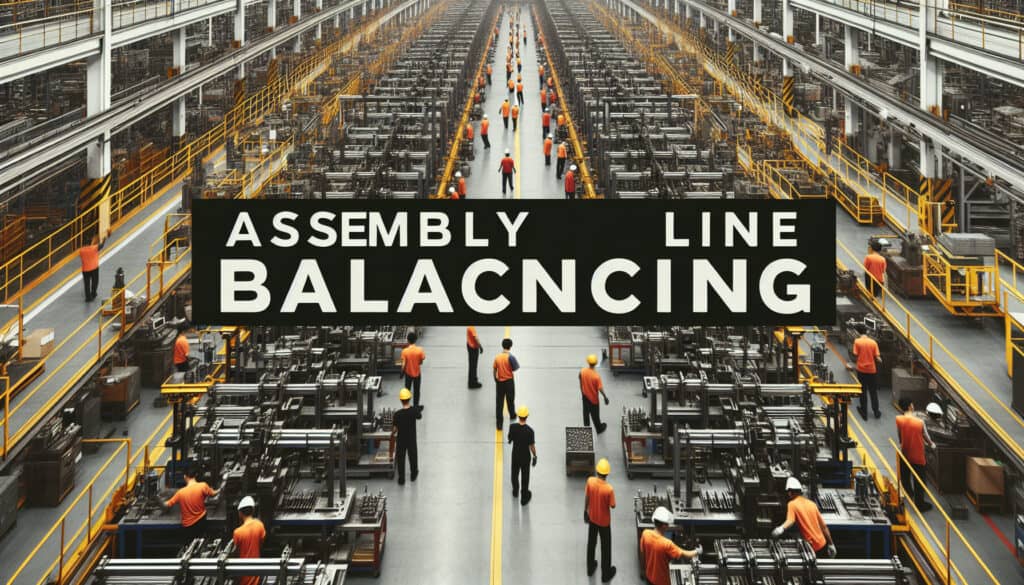将任务分配给工作站,以尽量减少闲置时间的过程。
- 方法: 人体工程学
装配线平衡

装配线平衡
- 持续改进, 面向制造设计 (DfM), 效率, 精益制造, 工艺优化, 生产效率, 质量管理, 价值流映射
目标
如何使用
- 装配线平衡是工业工程中的一个经典优化问题。它用于设计和配置装配线,以最大限度地提高效率和产量。
优点
- 提高生产效率,减少闲置时间,改善装配线的整体性能。
缺点
- 这可能是一个复杂且耗时的问题,需要精确的任务时间数据,而且可能不适合所有类型的装配线。
类别
- 工程, 精益西格玛, 制造业
最适合:
- 优化装配线的设计和配置。
装配线平衡广泛应用于汽车制造、电子、家电装配和消费品生产等行业,在这些行业中,效率和质量是最重要的。在这些行业中,该方法在生产系统的设计和配置阶段实施,特别是在建立新的装配线或重新配置现有装配线以适应需求波动或新产品推出时。这一过程涉及不同的利益相关者,包括工业工程师、生产经理和运营研究人员,他们合作分析工作任务、确定周期时间并有效分配资源。工作要素分析法等工具将任务分解为更小的组成部分,而专为优化算法设计的软件应用程序则为平衡过程提供了支持。通过应用装配线平衡技术,企业可以在各工位之间实现更公平的工作分配,减少瓶颈,并通过更有效地使用劳动力和机械来最大限度地减少浪费。这种方法不仅能提高生产率,还能在装配过程的各个阶段实现更一致的工作流程和更好的监控,从而改进质量控制措施。此外,它还在精益生产计划中发挥着重要作用,旨在缩短交付周期,提高对市场变化的响应速度。实施这些战略需要持续的反馈和调整,因此团队必须在所有参与者之间建立清晰的沟通渠道,确保绩效指标和生产目标与组织的总体目标保持一致。
该方法的关键步骤
- 根据任务及其依赖关系定义工作站。
- 计算每个操作的任务时间,以确定工作量。
- 根据所需的生产率确定周期时间。
- 分析各工作站的工作量分布。
- 实施平衡算法,如最大候选规则或等级位置加权法。
- 使用计算出的效率指标评估平衡效率。
- 调整分配和重新评估,优化布局。
- 在模拟或试运行的基础上,最终确定装配线配置。
- 监控性能,并在必要时进行迭代改进。
专业提示
- 利用遗传算法或蚁群优化等算法方法,探索平衡问题的非线性解决方案,特别是大规模装配线的平衡问题。
- 采用模拟工具来模拟不同的情况并找出瓶颈,以便在实际实施前进行调整。
- 在平衡过程中纳入人体工程学评估,确保任务不仅高效,而且有利于工人的健康和生产率。
历史背景
1949
1950
1950
1960
1960
1960
1960
1940
1950
1950
1958
1960
1960
1960
1960
(如果日期不详或不相关,例如 "流体力学",则对其显著出现的时间作了四舍五入的估计)。















相关文章
蒙特卡罗模拟
基于模型的测试
型号检查
混合方法研究
防错(Poka-Yoke)
任务简介测试